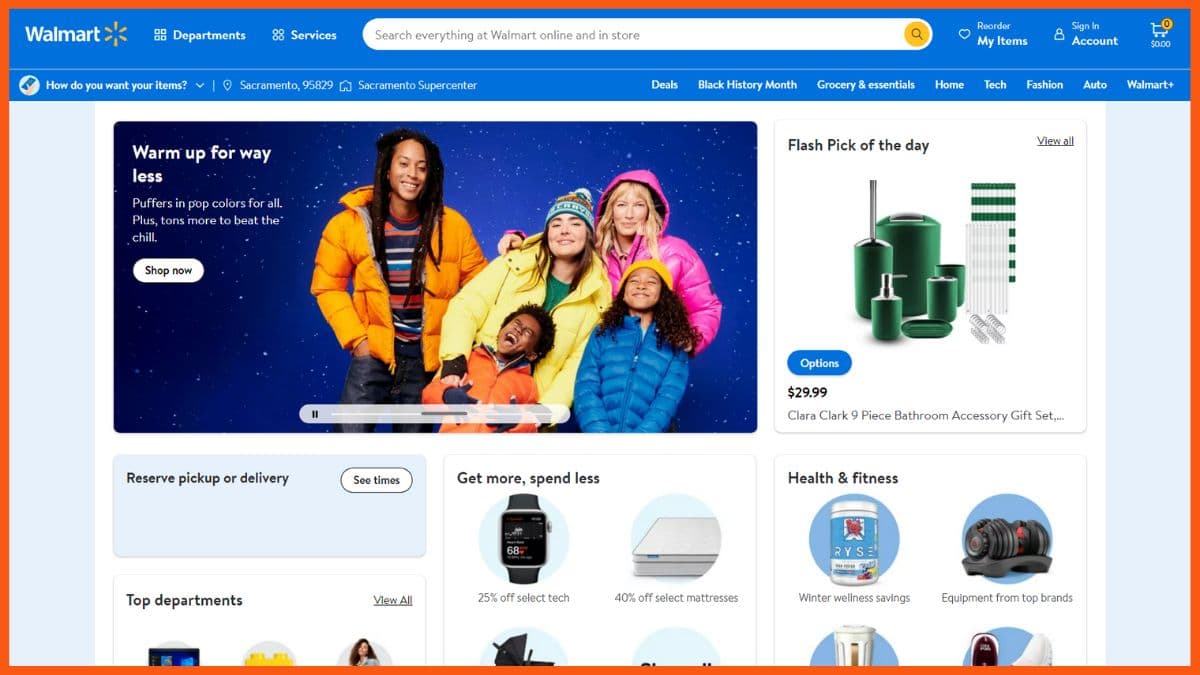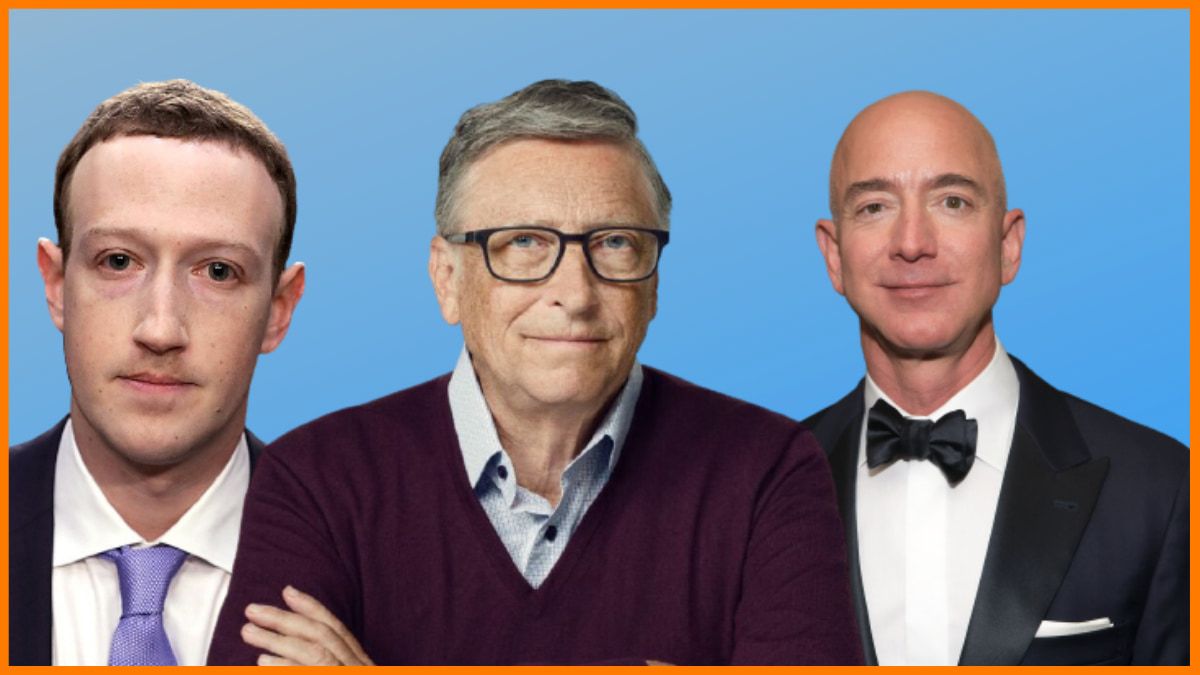In recent years, Amazon has become a household name, whether it’s because of its unlimited options for selection, custom-made services, cheaper prices, customer services, or good quality search tool that helps in finding items of one’s choice. Amazon is a US-based multinational e-commerce company that focuses on e-commerce, digital streaming, artificial intelligence, and cloud computing. Amazon is now the world’s largest online retailer and has also been referred to as the world’s most valuable brand.
Amazon was founded by Jeff Bezos in 1994 and is headquartered in Seattle, Washington. The company started out as an online marketplace for books but went on to expand its market to selling electronics, music CDs and DVDs, tools, toys, software, video games, apparel, furniture, baby products, sporting goods, beauty products, clothing, and jewellery, among others.
Amazon is considered to be one of the big five companies in the US information technology industry, along with companies like Google, Facebook, Microsoft, and Apple. Amazon went on to surpass Walmart as the most valuable retailer in the US by market capitalization in 2015. Amazon Prime, had surpassed more than 200 million subscribers worldwide as of 2024.
- The Business Model of Amazon
- How Does Amazon Work?
- What Does Amazon Sell?
- Key Elements of Model
- Amazon Revenue Model
- Amazon Revenue Breakdown
- The Value Proposition of Amazon
The Business Model of Amazon
Amazon has a well-known diversified business model. According to the annual report as of 2024, the company recorded net sales of over $638.0 billion and a net profit of over $59.248 billion. Amazon’s business model is an Ecommerce model, but over the years, it has made acquisitions and created a portfolio of business models and revenue streams. However, the biggest proportion of sales, which is fifty percent, came from their online marketplace.
The rest comes from the physical stores, Amazon AWS, subscription services to their apps, third-party seller services, and lastly, advertising revenues. Amazon Prime, which is a subscription-based service, plays an important role in the business model, as it gets the company more loyal customers who are willing to spend more for their services. Amazon also has a cloud infrastructure called AWS, which yields high margins. Besides that, Amazon also has an advertising business, which is worth billions of dollars.

Amazon measures its success based on lower prices, reliable tech infrastructure, free cash flow generation, and customer experience obsession. The company’s service sales have been growing at a fast pace, helping the company to expand globally. Amazon had attracted over 3.25 billion visits in June 2024 worldwide, while people spend more than six minutes on the site looking at a minimum of nine pages in order to find what they are searching for.

How Does Amazon Work?
Amazon runs a platform business model as the core with many other business units within the core model. Some units, such as Prime and the advertising business, are heavily linked to e-commerce platforms. For example, Prime helps reward Amazon customers, thus growing its platform business. Other units, such as AWS, helped improve Amazon’s technical infrastructure. Amazon sells a variety of its own products on the platform but also allows third-party sellers to sell to customers.
Here are some key milestones of Amazon:
- 1995 – Amazon launched as an online bookstore.
- 1997 – Became a publicly traded company.
- 2005 – Launched Amazon Prime, offering fast delivery and other benefits.
- 2006 – Introduced Amazon Web Services (AWS), now a leading cloud platform.
- 2012 – Acquired Kiva Systems to automate warehouse operations.
- 2015 – Celebrated 20 years with the first Prime Day sale.
- 2018 – Reached $1 trillion in market valuation.
- 2020 – Saw massive growth during the COVID-19 pandemic.
- 2021 – Founder Jeff Bezos stepped down as CEO; Andy Jassy took over.
What Does Amazon Sell?
Currently, the platform offers products and services such as Amazon Prime Video, Amazon Music, Appstore for Android, Echo and Alexa, Fire tablets and TVs, Kindle e-readers and books, merchant products and seller products. Amazon’s target audience is customers who buy products and subscribe to its services. So vendors sell their products on the platform, and developers are focusing on using AWS technology for infrastructure, digital products, and services.

Key Elements of Model
- Consumers – Amazon has great customer service and makes sure that they serve their consumers through their online websites. The company focuses on selection, convenience, and price. The Amazon website is designed in such a way that customers can browse through dozens of product categories and access them conveniently on various gadgets. The company strives to offer its customers the lowest prices through everyday product pricing and shipping offers.
- Sellers –Amazon gives sellers the opportunity to grow their business, sell their products on websites, and fulfill orders through us. Amazon earns fixed fees, a percentage of sales, per-unit activity fees, interest, or some combination thereof for the seller’s programs.
- Developers and Enterprises – Amazon serves developers and enterprises of all sizes, which includes startups, academic institutions, and government agencies through their AWS segment, which promises to offer a broad set of global computing, storage, database, and other services.
- Content creators – Amazon also helps authors and independent publishers with Kindle Direct Publishing, an online service that allows independent authors and publishers to choose a 70% royalty option and make their books available in the Kindle Store. They also offer programs that will allow musicians, filmmakers, app developers, and authors to publish and sell their content.
- Amazon Advertising – Amazon Advertising provides sponsored ads and video options, making it a highly effective marketing channel, as users on the platform already have strong purchase intent.

Amazon Revenue Model
With a market capitalization of $1.92 trillion as of April 2025, Amazon is currently one of the most valuable retailer in the world. Amazon’s online stores bring in high margins, while other parts of the Amazon business model, such as Amazon Advertising Services, Amazon Prime and Amazon AWS, run with much higher margins.
Thus, Amazon’s online stores are the foundation for other businesses that make the overall company more profitable in the long run. An important day for online sales is Prime Day, which has turned into a major shopping event comparable to Black Friday and Cyber Monday.
In 2024 Amazon Prime day generated over $14.20 billion which is a record high. The third-party seller is the company’s second-largest unit in terms of net sales. A key factor in the company’s success is its diversification into other areas.
How Amazon Makes Money
The revenue model of Amazon is primarily based on the commissions and fees it receives for matching borrowers and sellers. Amazon provides a marketplace that provides a standardized experience for both buyers and sellers. Amazon also derives a large portion of its revenue from affiliate programs in order to receive a large commission on their sales. The company also sells advertising space on its website so that vendors can increase their sales by advertising on the site. Amazon also makes a lot of money from the Kindle marketplace.

Amazon Revenue Streams
- Online stores – Includes product sales and digital media content where we record gross revenue. Amazon leverages our retail infrastructure to offer a wide selection of consumable and durable goods that include media products available in both physical and digital formats, such as books, videos, games, music, and software. Digital product subscriptions that provide unlimited viewing or usage rights are included in the Subscription Services.
- Physical stores – This includes product sales where our customers physically select items in a store. Online stores include sales to customers who order goods online for delivery or pick up from our physical stores.
- Third-party seller services – The Company receives a substantial portion of its revenue from third-party sellers, from commissions and any related fulfilment and shipping fees and other third-party seller services.
- Subscriptions – Amazon Prime membership comes with an annual and monthly fee. Amazon also offers subscription services for audiobooks, digital video services, digital music, eBooks, and other non-AWS services. Amazon’s standard Prime membership rate is $139 a year, which would translate into more than $25.21 billion in revenue, though the company offers discounted memberships for students and others.
- AWS – AWS includes global sales of computing, storage, database and other services.
- Other services – These include sales of advertising and marketing services.

The Value Proposition of Amazon
The value proposition provided by Amazon is actually quite simple: they offer the most convenient and widest range of products and services for the lowest prices. The prices of its products and services are so low that they have managed to displace Walmart, making the company the leader in the price category. While the goods and services are at the lowest prices, the quality of the products is not compromised in any way.
Amazon takes advantage of technology to get the lowest prices possible so that it doesn’t have to stock any kind of inventory. While other stores are burdened with spending money on stocking inventory, Amazon can cut out the competition on this one. It is a mix of a retail company and a technology company. Unlike retail companies, Amazon rarely hires stock clerks and floor managers and keeps employees with high technical skills.
Conclusion
Amazon is the face of the current market – global, digital, and ever-growing. It is a rapidly productive brand, adapting quickly to new demands in a fast, effective, and original way. For this reason, for now, even though it faces competition individually on all fronts, its corporate umbrella remains unique and, hence, should stay ahead in the coming years.
FAQ
When and by whom Amazon was founded?
Amazon was founded by Jeff Bezos in 1994.
How many business models does Amazon have?
Amazon has five main business models, an eCommerce, a Cloud Platform with AWS, runs subscriptions with Prime, third-party sellers and it also produces hardware products such as voice assistant, Alexa, the ebook reader Kindle, and more.
What business model does Amazon use?
Amazon uses a hybrid model: it sells products, lets others sell on its site, offers subscriptions like Prime, runs cloud services (AWS), earns from ads, and provides logistics and devices like Alexa.
Is Amazon a B2B or B2C?
Amazon is both a B2B and B2C company.
What is Amazon business model in India?
In India, Amazon follows a marketplace model, connecting buyers and sellers, offers Prime subscriptions, earns from ads, and provides logistics through Amazon Transportation and Fulfillment services.





























































































